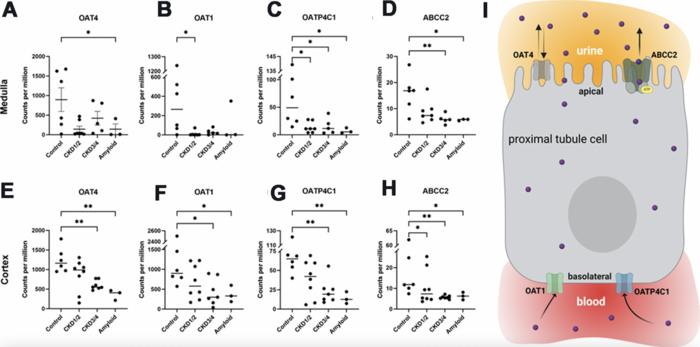Aging cats are a matter of increasing concern in veterinary medicine, particularly when considering the prevalence of chronic kidney disease (CKD) in geriatric felines. A newly released study, published in the latest volume of the scientific journal Aging-US, provides a groundbreaking exploration into how age-related changes impact kidney function in cats with naturally occurring CKD. This research not only deepens the understanding of feline renal health but also highlights similarities between feline and human kidney pathologies, potentially offering insights that extend to human health.
The study was led by a distinguished team of researchers, including Qinghong Li, James A. Holzwarth, and several others from Nestlé Purina Research and Oregon State University. They focused on how aging exacerbates the decline in kidney function, which is critical to understanding and managing CKD in a clinical context. The implications of their findings hold the potential to reshape current approaches in veterinary care, specifically regarding the monitoring and treatment of CKD in older cats.
Fundamentally, chronic kidney disease represents a significant challenge in veterinary medicine, primarily due to its gradual progression and the often-limited awareness surrounding it in the aging feline population. The climate of aging creates a perfect storm for renal decline, as older cats are more prone to diminished renal function, leading to the accumulation of harmful toxins in their bloodstream. In this research, the investigators examined kidney samples from a diverse cohort of cats aged from 6 to 21 years, thereby covering a comprehensive span of feline aging.
Within the study’s framework, two distinct groups were analyzed. The first group consisted of colony cats, while the second encompassed privately owned cats. Interestingly, the results unveiled that certain renal transporter genes, namely OAT1, OAT4, OATP4C1, and ABCC2, displayed significantly reduced expression levels in CKD-affected cats in comparison to healthier counterparts. This downregulation highlights the diminishing capacity of the kidneys to filter and excrete toxic substances effectively, illuminating the underlying mechanisms that lead to the exacerbation of CKD symptoms in aging felines.
A particularly striking finding was the observation of increased levels of uremic toxins in the bloodstream of cats suffering from CKD. This includes substances like trimethylamine N-oxide and indoxyl sulfate, which are detrimental to overall feline health. The researchers emphasized that even in seemingly healthy older cats, toxin levels were significantly higher than those found in their younger counterparts. This finding suggests that the aging process alone carries risks of renal degeneration, reinforcing the notion that age should be a serious consideration when diagnosing and treating CKD.
The clinical implications of these findings are profound. By understanding how age influences renal transporter expression, veterinarians may consider implementing more proactive monitoring protocols for older cats. This shift could facilitate the early detection of CKD and allow for timely intervention, potentially improving the quality of life and extending the longevity of aging felines. Regular veterinary check-ups would become imperative, allowing for the assessment of renal function and toxin buildup.
Moreover, the synergies between feline and human renal health may pave the way for better strategies in managing human kidney diseases. The researchers pointed out that both cats and humans exhibit similar pathophysiological patterns when it comes to kidney diseases, particularly CKD. The chronic tubulointerstitial inflammation and fibrosis observed in both species reveal a fascinating parallel that can foster further research into shared therapies and management approaches.
The concept of comparative medicine, particularly the study of renal function across species, is gaining traction within the scientific community. Learning from the biological similarities between cats and humans can lead to innovative discovery avenues and enhance clinical practices in human healthcare. Therefore, the research underscores an urgent need for an interdisciplinary approach towards understanding age-related kidney issues in both felines and humans.
The researchers proposed that correlating kidney transporter levels with clinical symptoms could unlock valuable insights into disease progression. By performing a more nuanced analysis of kidney function and uremic toxin profiles, they could develop tailored treatments, thus ensuring a higher standard of care for geriatric feline patients.
As we reflect on the importance of this research, it becomes evident that our understanding of feline CKD—and, by extension, the parallels with human kidney disease—is in its infancy. The study encourages a collaborative effort from veterinary professionals, researchers, and pet owners to prioritize feline renal health, fostering environments where diseases like CKD can be monitored and managed effectively.
In conclusion, the enlightening findings from this study not only shed light on the complexities of chronic kidney disease as an aging hallmark in cats but also inspire a broader discourse on kidney health. By recognizing the urgency of this issue, we hold the responsibility to enhance awareness surrounding kidney health in aging pets. This research represents a pivotal step towards a deeper understanding of CKD, reiterating the connection between aging and chronic disease management in both veterinary and human medicine.
Subject of Research: Animals
Article Title: Impaired renal transporter gene expression and uremic toxin excretion as aging hallmarks in cats with naturally occurring chronic kidney disease
News Publication Date: January 28, 2025
Web References: Aging-US
References: DOI: 10.18632/aging.206176
Image Credits: © 2024 Li et al.
Keywords: aging, chronic kidney disease, OAT1, OATP4C1, ABCC2, feline health
Tags: aging effects on kidney functionchronic kidney disease in aging felineschronic kidney disease monitoringfeline renal health researchgeriatric feline healthinsights into feline health challengesmanagement of CKD in catsrenal transporter genessimilarities between feline and human kidney diseaseuremic toxins in catsveterinary implications of CKDveterinary medicine advancements





